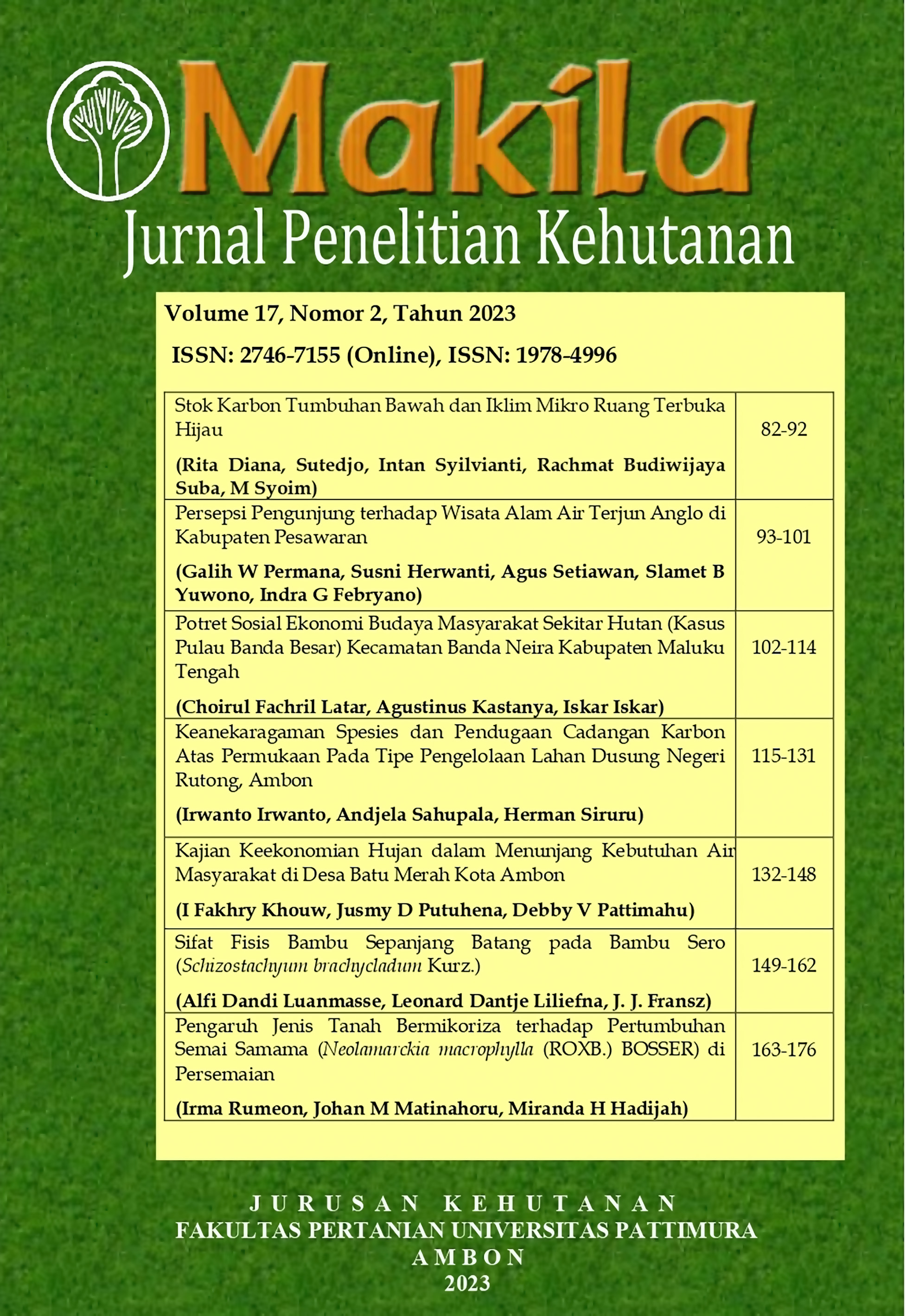STOK KARBON TUMBUHAN BAWAH DAN IKLIM MIKRO RUANG TERBUKA HIJAU
Abstract
This study was to determine differences in the percentage of canopy cover on carbon stock in three green oven space (RTH) areas at the Faculty of Forestry Mulawarman University (FFMU) and to determine differences in light intensity, temperature, and humidity at every plot location of understorey plants at the FFMU. The method used in this research was to measure the percentage of canopy cover, plant biomass, and carbon stock in plots of 2 x 2 m, measuring light intensity, temperature, and humidity from 06.00 in the morning to 18.00 in the afternoon. Data was collected at three RTHs, namely, RTH Guest House (Location 1), RTH Workshop (Location 2), and RTH Arboretum LSHK (Location 3). The result found the highest amount of carbon (130,8 tons/ha) and the percentage of crowns (59,42%). Medium green open space RTH Guest House amount of carbon (38,4 tons/ha), percentage of the canopy (55,69%), and the lowest RTH Arboretum LSHK amount of carbon (32 tons/ha) and percentage of the canopy (53.71%). Furthermore, the highest light intensity is in the RTH Guest House because the place is sparse, tenuous, and open so that light can directly enter and get more sunlight; moderate light is in the RTH Arboretum LSHK, and little light is in the RTH Workshop because the place is more closed so that light enters only a few. Then, for each temperature, the humidity values obtained are similar. The findings demonstrated variations in carbon storage due to vegetation density, age, growing place quality, and soil characteristics.
Downloads
Copyright (c) 2023 Rita Diana, . Sutedjo, Intan Syilvianti, Rachmat Budiwijaya Suba, M Syoim

This work is licensed under a Creative Commons Attribution 4.0 International License.











